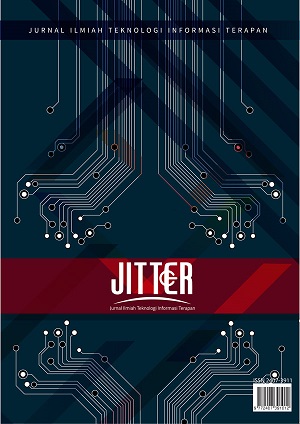ANALISIS LAJU ANGKUTAN SEDIMEN UNTUK MENGANTISIPASI RESIKO BENCANA SEJAK DINI PADA SUNGAI CILEUEUR KABUPATEN CIAMIS
DOI:
https://doi.org/10.33197/jitter.vol9.iss2.2023.1040Keywords:
River, Plan Debt, SedimentationAbstract
This study uses the Duboy's method and the Englund -
Hunsen method to calculate bed load transport which
aims to determine the volume of sedimentation in the
Cileueur River, Ciamis Regency as a form of early
anticipation of disaster risk.
This research was carried out with stages starting
from hydrological analysis, determining the planned
rainfall, analyzing the design discharge, and
analyzing the average velocity of the river.
This research is based on considerations to anticipate
disaster risks, especially in the Cileueur River, Ciamis
Regency, this river has a length of 25,000 m and an
area of 13,660.7 ha of watershed. In the Cileueur
River there are several problems including silting of
the river which results in frequent occurrence of large
enough water overflows exceeding the cross-sectional
area capacity of the river during the rainy season.
Seeing the impact of the occurrence of these
problems, it is necessary to conduct research in order
to anticipate risks before a disaster occurs.
Based on the results of the analysis and discussion, it
can be concluded that the results of bed load
transport calculations in the Cileueur river, Ciamis
Regency using the Duboy's method obtained an
average of 357.5619 tonnes/year and the Englund and
Hunsen method of 317.379 tonnes/year. Then the
comparison of the results of calculating the amount of
bottom sediment from the two methods is 6%.
Downloads
Downloads
Published
How to Cite
Issue
Section
License
Copyright (c) 2023 Wahyu Sumarno, Yanti Defiana, Dedi Sutrisna

This work is licensed under a Creative Commons Attribution-NonCommercial-ShareAlike 4.0 International License.
Submission of a manuscript implies that the submitted work has not been published before (except as part of a thesis or report, or abstract); that it is not under consideration for publication elsewhere; that its publication has been approved by all co-authors. If and when the manuscript is accepted for publication, the author(s) still hold the copyright and retain publishing rights without restrictions. Authors or others are allowed to multiply the article as long as not for commercial purposes. For the new invention, authors are suggested to manage its patent before published. The license type is CC-BY-SA 4.0.




.png)
.png)













.png)


